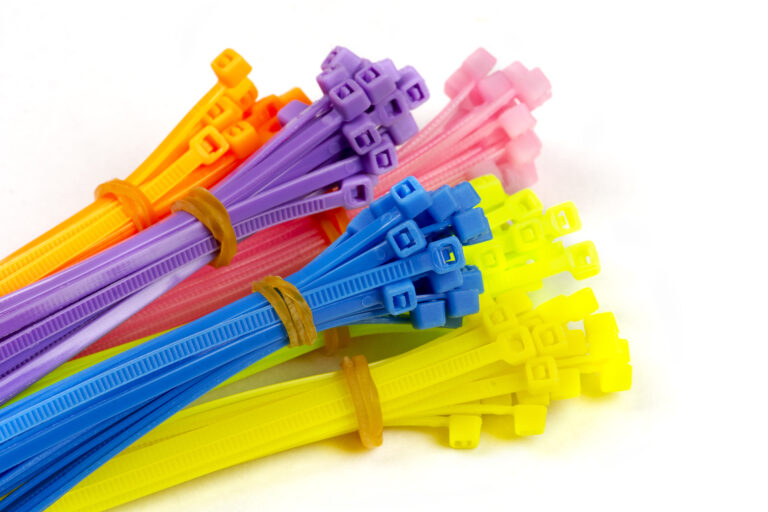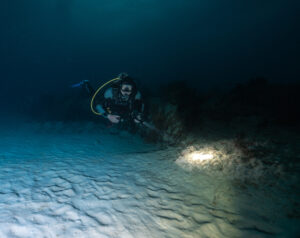What is the purpose of Zip Ties in diving?
Zip ties, also known as cable ties or tie wraps, are self-locking plastic strips used to connect objects together. These versatile and cost-effective fastening devices have found a multitude of applications in various fields, including scuba diving. In the scuba diving community, zip ties are valued for their strength, ease of use, and adaptability, which make them indispensable tools for divers.
History
The zip tie was invented in 1958 by Thomas & Betts, an electrical company, for the purpose of bundling and organizing electrical cables. Since then, it has been embraced by various industries and hobbyists, thanks to its simplicity and effectiveness. Scuba divers began using zip ties in the 1960s and 1970s, as diving equipment evolved and the need for efficient fastening solutions became more pronounced.
Materials and Design
Zip ties are made from various materials, with nylon being the most common due to its high tensile strength, durability, and resistance to chemicals and ultraviolet light. The ties consist of a serrated strip with a ratcheting mechanism at one end, allowing the user to loop the strip around an object and fasten it by inserting the free end through the mechanism. As the strip is pulled through, the teeth engage, preventing it from being loosened. Zip ties come in various lengths, widths, and colors, providing an array of options for divers.
Applications in Scuba Diving
Hose Management
Zip ties are commonly used by divers to secure and organize hoses, ensuring they do not interfere with other equipment or become entangled. This is especially important for regulator hoses, which connect the first and second stages of the scuba regulator, as well as for the low-pressure inflator hose, which connects the buoyancy compensator (BC) to the tank.
Attaching Accessories
Divers often use zip ties to attach accessories, such as dive lights, underwater cameras, and slates, to their equipment. These attachments can be made directly to the diver’s BC or other gear, such as a dive computer or compass.
Gear Repair
Zip ties can be employed as temporary fixes for damaged or broken equipment. For instance, they can be used to secure a loose fin strap or replace a missing snorkel keeper. While not intended as permanent solutions, these quick fixes can save a dive and prevent further equipment issues.
Marker Deployment
Zip ties can be utilized in conjunction with surface marker buoys (SMBs) and lift bags. Divers can attach a zip tie to the line, creating a loop to secure the SMB or lift bag to an object, such as a wreck or a rock.
Emergency Use
In emergency situations, zip ties can serve as improvised handcuffs, allowing a diver to secure an uncooperative or panicked dive buddy to prevent further danger. This application should only be used as a last resort, and divers should be trained in proper techniques for managing such situations.
Precautions and Considerations
While zip ties are highly useful, divers should be aware of potential issues:
Environmental Impact
Care should be taken to prevent littering, as discarded zip ties can pose a risk to marine life. Divers should remove and properly dispose of used zip ties after their dives.
Entanglement
When using zip ties to secure hoses or accessories, divers must ensure that they do not create additional entanglement hazards. It is essential to trim excess material and maintain streamlined equipment configurations.
Material Degradation
Although zip ties are generally durable, they can become brittle and weaken over time, especially when exposed to sunlight and saltwater. Divers should inspect and replace their zip ties as needed to ensure their reliability.
Metal Alternatives
In some cases, metal fastening solutions, such as stainless steel cable ties or hose clamps, may be more appropriate for certain applications, providing increased strength and resistance to corrosion. Divers should assess their needs and choose the appropriate fastening method accordingly.
Cutting Tools
Divers should always carry a cutting tool, such as a dive knife or line cutter, to quickly remove or cut through zip ties if necessary, particularly in emergency situations.
Tips for Using Zip Ties in Scuba Diving
Select the Appropriate Size
Choose the right length and width of zip tie for the specific task. Using a zip tie that is too short or too narrow may compromise its effectiveness or durability.
Tighten Securely
When fastening a zip tie, ensure it is tightened securely to prevent it from slipping or loosening during the dive. However, take care not to overtighten, as this can cause damage to the equipment or reduce circulation if applied to a body part.
Trim Excess Material
After tightening a zip tie, trim the excess material to maintain a streamlined configuration and reduce the risk of entanglement. Use a pair of scissors or a cutting tool designed for zip ties to ensure a clean cut.
Double Up for Added Security
For critical applications or situations where additional strength is required, consider using two zip ties in parallel or a heavy-duty zip tie. This can provide extra security and minimize the risk of failure.
Use Releasable Zip Ties
Releasable zip ties are designed with a small release tab, allowing the user to unlock the ratcheting mechanism and reuse the tie. These can be particularly useful for temporary applications or when adjustments may be necessary.
Zip ties have become an essential tool for scuba divers due to their versatility, simplicity, and effectiveness. From hose management and accessory attachment to gear repair and emergency use, zip ties provide countless applications in the underwater environment. By understanding their benefits, limitations, and proper usage, divers can make the most of this invaluable resource and enhance their diving experiences. As with any aspect of scuba diving, safety and environmental considerations should always remain paramount when using zip ties.

















